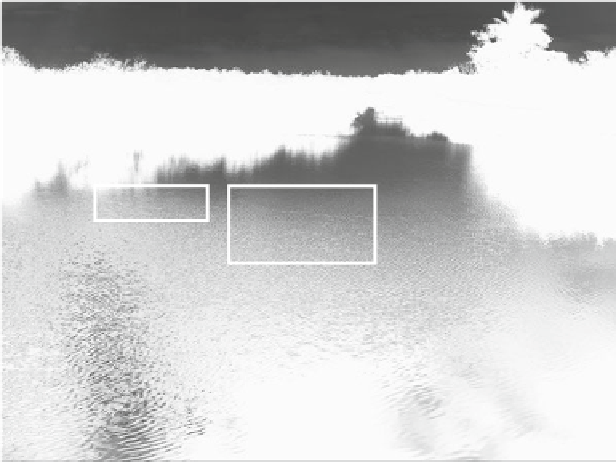Environmental Engineering Reference
In-Depth Information
Piscivore
Invertebrate
Planktivore
Vertebrate
Planktivore
Rotifers
Small
Crustacean
Zooplankton
Large
Crustacean
Zooplankton
Nannoplakton
Edible Net
Phytoplankton
Inedible
Phytopankton
PO
4
,
NH
4
Fig. 18.3 Conceptual model of trophic structure in a typical lake, as described by Carpenter
et al. (1986)
phytoplankton. Furthermore, the size structure of the zooplankton makes a diffe-
rence in what will happen. So we see that the effects of planktivores on zooplankton
are complex. A particular planktivore (vertebrate or invertebrate) may not signifi-
cantly affect the size distribution within the zooplankton (herbivore) trophic level;
that is changing the ratio of large to small zooplankton. This can still have a
downward effect. Large zooplankton (e.g.
Daphnia
) tend to have a much stronger
negative effect on phytoplankton than smaller zooplankton, so cascading effects
may still occur. The effect of zooplankton on phytoplankton is also somewhat
complex, because (1) some phytoplankton are inedible to zooplankton, and (2)
zooplankton may sometimes have a beneficial effect on some phytoplankton by
increasing the speed of nutrient recycling into the water column.
In the following, we adapt these theoretical concepts on trophic structuring and
cascades to the situation of the Floridean marshlands of the Everglades in the southern
U.S and apply them to analyse the implications for the stability of its ecosystems.
18.2 The Aquatic Food Web of the Everglades
The Everglades ecosystem is a subtropical heterogeneous marshland, which
offers diverse habitats for a wide variety of species (see Chap. 21), including
large rookeries of wading birds. The underlying food web of small fishes and
invertebrates are the energy base for much of the biodiversity of the higher trophic









































